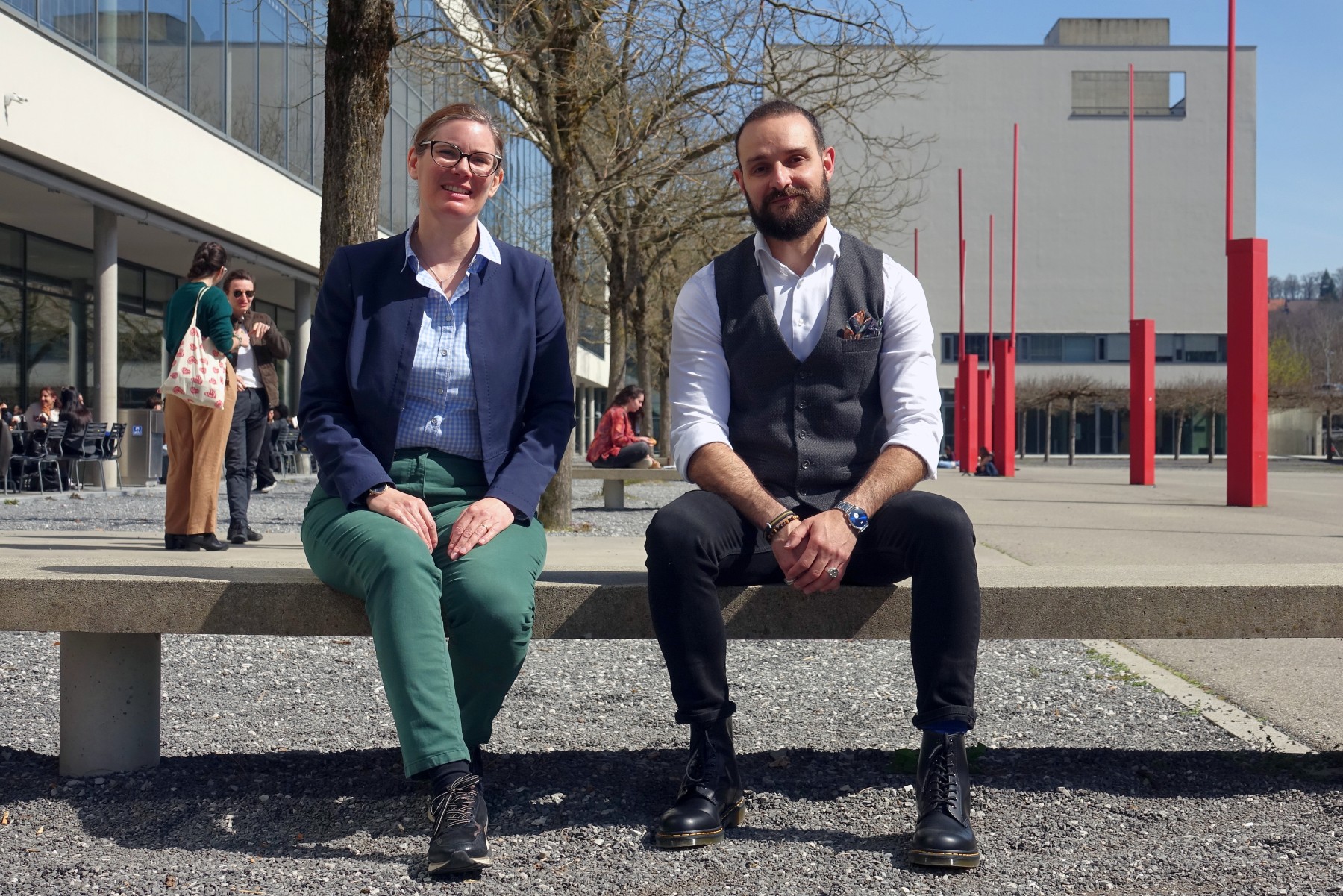Valeria Mozzetti Rohrseitz and Sebastian Dobarco on the Pérolles 2 campus at the University of Fribourg.

At the University of Fribourg, the transition from research to market is supported by the Knowledge and Technology Transfer Service (KTT). Dr. Valeria Mozzetti Rohrseitz, who heads the unit, and Dr. Sebastian Dobarco, scientific collaborator, are part of the team that guides researchers through every key stage: intellectual property protection, funding, startup creation, or collaboration with industry. In the life sciences as in other fields, their mission is to help concrete solutions emerge from academic potential.
What role do the life sciences play in technology transfer at the University of Fribourg?
Valeria Mozzetti Rohrseitz: Nearly half of the projects we support through technology transfer are in the life sciences. This includes a wide range of fields, from biotechnology to medtech and biomaterials. We currently manage around 30 active patents, a significant portion of which are directly linked to this sector. It’s a particularly fertile area, where university research can lead to practical applications that benefit society.
What types of innovations from Fribourg best illustrate this potential?
Sebastian Dobarco: For example, we have patents related to bacterial detection, fluorescent cell markers, and diagnostic technologies. One researcher is currently developing an innovative microscope, and we’re assisting her through the initial steps of launching her startup. These examples show that the life sciences offer a direct connection between fundamental research and real-world impact.
What concrete support is available for researchers who want to take the plunge?
VMR: The University has created several funding instruments, such as the “Proof of Concept Grant” and the brand-new “Startup Grant.” These fill a gap between academic research and national funding programs like BRIDGE or Innosuisse. They allow researchers to test a technology and develop a prototype.
How do you ensure intellectual property protection?
VMR: We get involved very early on, because a patent must be filed before any publication — which is a real challenge. The University covers the cost of patent filings and grants exclusive licenses to startups. We’ve also standardized the intellectual property transfer processes to provide more transparency and clarity for researchers. This makes it easier for them to move from the academic world into innovation.
What forms do collaborations between the University and Fribourg-based companies take?
SD: There are several models — consulting services, co-funded projects, or partnerships with Innosuisse. We act as facilitators: a company contacts us, we assess its needs and connect it with an expert from the University. These connections often lead to long-term, successful collaborations.
Fribourg places a strong emphasis on interdisciplinarity. Is that an asset for innovation?
VMR: Absolutely. The canton brings together many competence centers in close proximity: the Adolphe Merkle Institute (AMI), the Food Research and Innovation Center (FRIC), the School of Engineering and Architecture (HEIA-FR), etc. This geographic and intellectual closeness fosters cross-disciplinary projects. We encourage researchers to take full advantage of this often underrated ecosystem to turn their ideas into reality.
